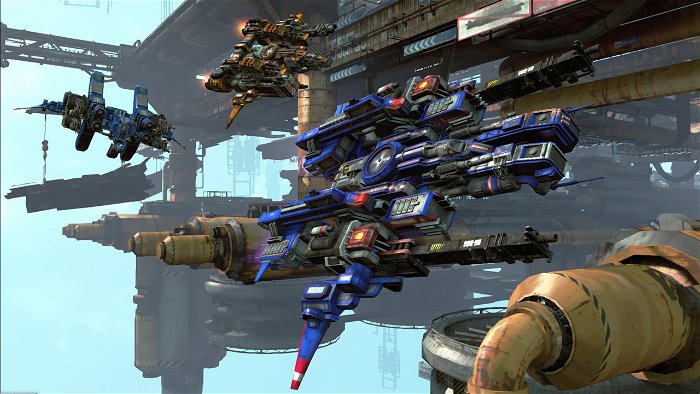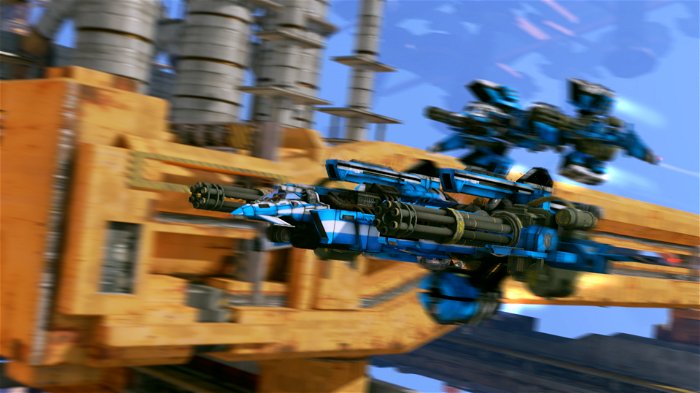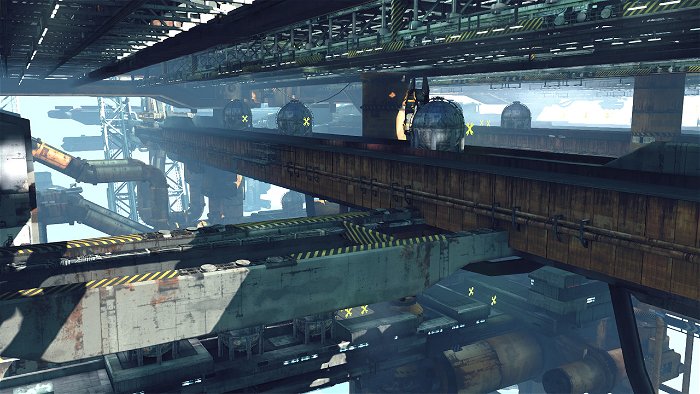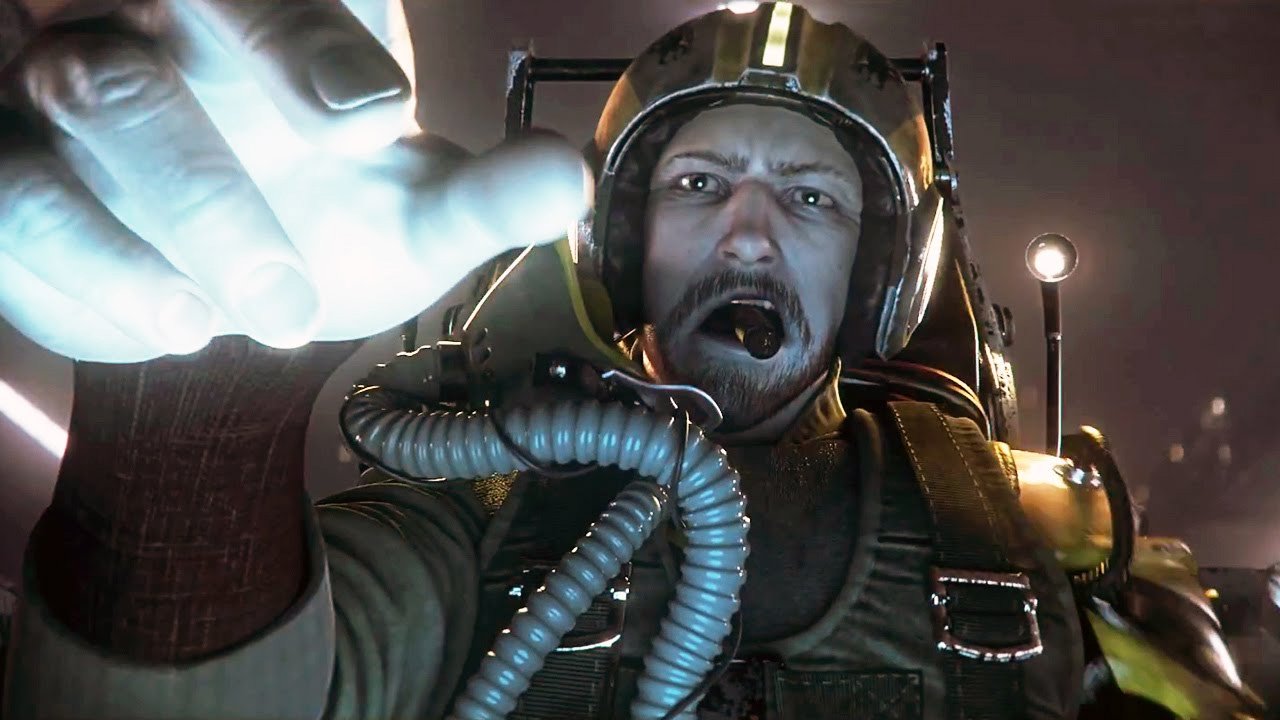Vehicular combat games have always been on the fringe of gaming, compared to first person shooters, but in recent years, they’ve become rarer still. The current generation of consoles doesn’t even have a Wipeout or Twisted Metal to let players jump into some futuristic vehicle and enjoy some furious, high speed combat. Ragequit studios, based in Paris, France, is aiming to change that. Their PC combat game, Strike Vector EX has already made a splash in the PC gaming circles, and now it’s coming to the PS4 and Xbox One. We got a chance to speak with Ragequit co-founder, concept and 3D artist Pierre-Etienne Travers to see what console gamers could expect from this new combat game.
Comics Gaming Magazine: What was the inspiration for Strike Vector EX?

Pierre-Etienne Travers: Arcade flight games and fast FPS! Crimson Skies X Quake 3 is a good way to describe it! Quake 3 for the hectic action and the unforgiving gameplay, and Crimson Skies for the arcade and accessible flight mechanics.
CGM: Does the transforming ability of the vehicles have any roots in Japanese transforming mecha?
PET: I think the Japanese look of it came afterward. The idea of the transforming thing came first from a wish for mixing flight mechanics and FPS kind of games. The visual look of the ship was born from the mix of Japanese old-school arcade games ship silhouettes mixed with real-life mechanical parts.
CGM: How does introducing the considerations of flight and true 3D movement change the nature of the gameplay compared typical “corridor” shooters that most competitive FPS games are like?
PET: This was both a challenge and the most interesting part of the project. We spent a lot of time finding a good balance between structures and spaces. It was more a trial-and-error process than an overthought plan. In fact, we had no reference for doing that. Looking back at older flight games, Descent was made up from corridors; Crimson Skies is all about open areas; Warhawk did have similar vehicles, but was not focused on that, etc. I think we really have created a unique approach of level design and playability.
CGM: How did you approach the controls for this game? As an FPS, what changes when you bring in the high-speed behavior of fighters?

PET: That was hard to set, we had to make choices to balance both control modes and it took us months to get something satisfying enough. One of the hardest parts was the transition between flight mode and FPS mode. We had to make a choice and we decided to force the crosshair in the middle for the FPS mode—the crosshair was floating around. As a result, it was feeling more like a standard FPS with precise aiming.
CGM: Could the simulation crowd from X-Wing and other games enjoy this?
PET: I think we have to make sure to not mislead them. Strike Vector is not a simulation at all. When we were in Alpha, our first community came from that kind of game. But when they played it for the first time, most were disappointed and warned us about misleading simulation fans. This is why we have pushed the fast FPS aspect more than the flight part in our initial promotional campaign.
CGM: With comments such as, “Made for fans of Quake 3 style shooting,” it seems like Ragequit believes there’s a difference in the competitive FPS of years past, compared to today. What are these differences?
PET: The rhythm has changed. Old school FPS were faster and simpler. No special objective or classes. Just super-fast guys shooting each other non-stop! We like that a lot, and in our humble little office we are playing Quake 3 every day at lunch time. That’s really our thing! All the studios members have specific taste in video games, my favorite developer is Yasumi Matsuno. But Quake 3 is the common point between all of the team members.
CGM: A vehicular combat game is fairly uncommon in today’s market. Why do you think that is, and what made you decide to take a chance on the genre with your game?

PET: It’s a niche market, and niche markets are our thing. There will always be people who like these types of games. They are not millions, but they are here, waiting for the game that will at least fit their specific tastes. Strike Vector EX is a game like that. We are doing it because that’s the type of game we want to play. We are making huge efforts with this console version to make it more accessible to a larger audience, but we will not sacrifice what we like for this reason.
CGM: What can you tell us about the new, upcoming single-player component for consoles? How big is it going to be?
PET: It will be a real campaign with a strong story line and characters written by Stephane Beauverger, a famous science fiction novelist. We have put all our effort to make it awesome as many players asked for it.
CGM: How’s the state of the game industry in France and Europe doing compared to Asia and North America?
PET: We have a lot of famous studios in France and in Europe. I think they are just not as big as what you find in the US or Canada. But that does not mean they can’t deliver big hits! The Witcher 3 is made in Poland, Star Wars Battlefront is made in Sweden. And I’m not even talking about Minecraft, the most important game of the past years. France, however, is a bit outmanned by the industry as a whole, with only a few studios delivering high profile games, Quantic Dream, Heavy Rain, Arkane Studio, Dishonored, Dontnod, Remember Me, and recently Amplitude studio, Endless Legend.

Ubisoft is not really a French company anymore in a traditional sense, since it’s located in so many other countries. But for direct comparison, all the others studios, us included, can only pretend to be mid-range, direct-to-download or mobile games. This is the result of a really bad strategy of our government. They have done nothing for the videogame industry for years and they haven’t seen the potential beneath the “for kids,” “violent,” ”brainless,” “dangerous” picture they have depicted to the public for years with the help of the other mass media, like TV, movies, etc. Hopefully things have recently start to change and some efforts have been made but it’s a bit late in my opinion.
CGM: You’re coming into the indie studio scene a few years after the trend first started. How is it to be an indie studio now, compared to 10 years ago?
PET: I can’t really say how it was 10 years ago; I was still an art student at this time! But from what I have seen and heard, things have changed quite a bit. We have more competition, we suffer from a bad image sometimes thanks to the poor games on Early Access, we are associated with unfinished retro pixel art games and arrogant people. Of course, all of that is wrong, but yes, the public is less friendly with independent developers nowadays and it’s not as cool as it was to say “I’m an Indie!” Even the term is wrong now. I have seen too many games with the label “independent” on it recently, that are absolutely not developed by indie studios, Child of Light, etc. I’m not saying they are bad games, but it shows that the word “independent” is meaningless now.
And that’s maybe a good thing.
Now I just want to know if a game is good or not, and, if it’s good, I will look at who made it.




